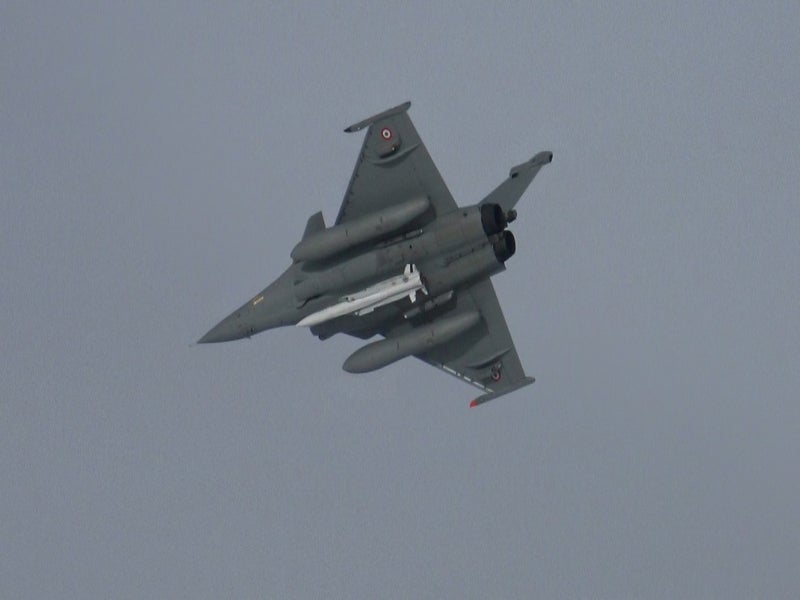SOURCE: AFI


The Indian Air Force (IAF), tasked with the critical responsibility of delivering nuclear weapons in retaliation as part of India’s nuclear triad, relies heavily on its fleet of fighter jets to execute this mission. Currently, the IAF’s nuclear delivery mechanism involves aircraft such as the Mirage 2000, Jaguar, and potentially the Rafale, equipped with gravity-based nuclear bombs.
This approach, however, necessitates that these aircraft fly over or near their target areas, exposing them to advanced enemy air defenses and increasing the risk of mission failure. As regional security dynamics evolve and adversaries bolster their air defense capabilities, it’s time for the IAF to transition to air-launched nuclear-capable missiles—offering a safer, more flexible, and strategically superior deterrent.
India’s nuclear doctrine, centered on a “no first use” policy and credible minimum deterrence, hinges on the ability to deliver a swift and assured retaliatory strike. While the land-based Agni missile series and the sea-based K-15 and K-4 missiles (deployed on Arihant-class submarines) form robust pillars of this triad, the air-based component lags in modernization. The current reliance on free-fall nuclear bombs, a technology rooted in Cold War-era strategies, limits operational flexibility and places IAF pilots and aircraft at unnecessary risk. An air-launched nuclear-capable missile, launched from a safe standoff distance, would address these vulnerabilities and align India’s aerial nuclear capabilities with contemporary global standards.
Modern air-launched nuclear missiles, such as the French ASMP-A (used with Rafale jets) or the American AGM-86 ALCM, offer significant advantages over gravity bombs. These missiles can be fired from hundreds—or even thousands—of kilometers away, allowing aircraft to strike without entering heavily defended enemy airspace. For India, this capability would be a game-changer, particularly given the sophisticated air defense systems fielded by potential adversaries, such as China’s HQ-9 and S-400 systems or Pakistan’s evolving missile defense network. A standoff weapon would ensure the IAF could deliver a nuclear payload while minimizing the risk of interception or preemptive strikes on its aircraft.
The IAF already operates platforms that could be adapted for such a missile. The Rafale, inducted into the IAF in 2020, is a prime candidate, given its proven compatibility with the ASMP-A in French service. Similarly, the Su-30 MKI, which constitutes the backbone of the IAF’s fighter fleet, could be modified to carry a nuclear-capable missile with the right integration efforts. Developing or acquiring such a weapon would not only enhance the IAF’s deterrence posture but also reduce the logistical and safety challenges associated with handling and deploying nuclear bombs.
India’s Defence Research and Development Organisation (DRDO) has the technological foundation to pursue this capability. The successful development of the BrahMos supersonic cruise missile—already integrated with the Su-30 MKI—demonstrates India’s prowess in missile technology. A nuclear-capable variant of BrahMos, or a new missile entirely, could be engineered with extended range and precision guidance, tailored to the IAF’s nuclear mission. Alternatively, India could explore collaboration with strategic partners like France, which has offered defense technology transfers in the past, to co-develop or procure a suitable missile.
The strategic imperative for this shift is clear. In a retaliatory scenario, time and survivability are paramount. Flying a nuclear-armed aircraft into contested airspace risks detection and destruction before the weapon can be deployed, undermining India’s second-strike credibility. A standoff missile, launched from Indian airspace or border regions, would ensure the IAF could strike deep into enemy territory while keeping its assets out of harm’s way. This capability would also complicate adversaries’ defense planning, forcing them to account for a broader threat radius.
NOTE: AFI is a proud outsourced content creator partner of IDRW.ORG. All content created by AFI is the sole property of AFI and is protected by copyright. AFI takes copyright infringement seriously and will pursue all legal options available to protect its content.